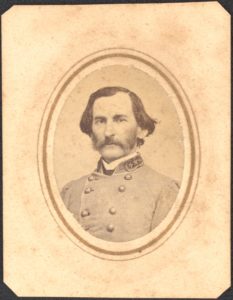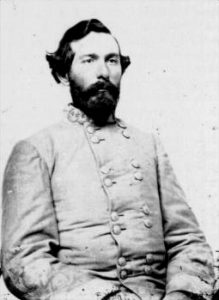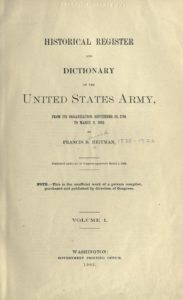Max Weber (c. 1862)
28 January 2023
Brigadier General Max Weber, formerly of the Grand Duke of Baden’s army, led a Union Brigade in an attack on the Confederate position in the Sunken Road at Antietam on 17 September 1862, and was badly wounded in the right arm in that action.
His photograph is another relatively recent acquisition for the Liljenquist Family Collection of Civil War Photographs at the Library of Congress. Touch to enlarge.
George Thomas Anderson (c. 1861)
28 January 2023
I’d not seen this fine photograph of G.T. “Tige” Anderson before. It’s a recent (2021) addition to the now-massive Liljenquist Family Collection of Civil War Photographs at the Library of Congress. It looks to have been taken when he was Colonel of the 11th Georgia Infantry in 1861-62.
Anderson commanded a brigade in D.R. Jones’ Division and fought in and near the West Woods at Sharpsburg on 17 September 1862, and was appointed Brigadier General soon afterward. He was wounded in the thigh at Gettysburg in 1863 but survived the war to be surrendered at Appomattox Court House, VA in April 1865.
The Liljenquist photo is quite different from his late-war appearance, like this example, from a picture on his Findagrave memorial.
Francis B Heitman and his Historical Register and Dictionary
25 January 2023
Although he was not an Antietam veteran, I owe former Regular Army Sergeant Francis B. Heitman at least a brief biographical examination and my humble thanks.
His massive work, the Historical Register and Dictionary of the United States Army from its Organization, September 29, 1789, to March 2, 1903, updated and published in 2 volumes by the US Government Printing Office in 1903, lists basic service information for every man who was commissioned an officer in the United States Army up to that year.




